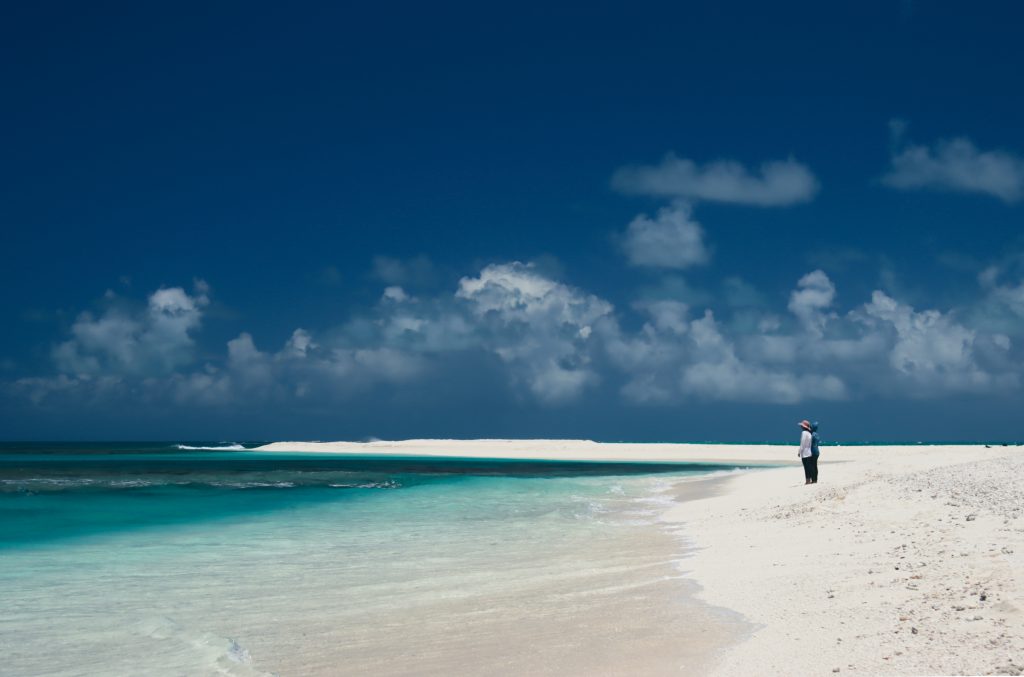Like most kids in Hawaii, Haunani Kane grew up going to the beach nearly every day near her family home on Oahu’s windward side.
More than sand castles and surf sessions, her childhood on the beach instilled a knowledge of place. And it made her ask questions about what she observed: Why was the sand disappearing? Why were trees falling into the ocean?
It led her to study geology in college, where she kept questioning why such environmental degradation was happening.
“Were these beaches going to continue to be there in the future, for my children? Would I be able to share the same experiences with them that I had?” Kane recalled thinking at the time.

Her questions have not let up. But she’s now in a position to find more answers.
Today, Kane is the chair of the Hilo-based nonprofit MEGA lab, an assistant professor within the University of Hawaii Manoa’s Department of Earth Sciences, a volunteer and crew member with the Polynesian Voyaging Society and an avid surfer.
Her work on climate change and coastal erosion was recently recognized by the climate-focused nonprofit media organization Grist. Kane, within the Science and Energy category, is among the 2023 Grist 50 Fixers: a list of 50 leaders driving positive change.
“It’s an honor to be recognized, especially on a larger platform like this,” she said.
The MEGA Lab teaches communities through storytelling about science and environmental conservation issues, making science accessible to folks for whom it might not have been within the traditional education system.
The lab offers an in-person learning and community space in downtown Hilo. Both through the MEGA Lab and her professorship, Kane considers it a privilege to guide her successors.
“I’m fortunate enough to play a role in the next generation of learners, the next generation of scientists, the next generation of folks that are environmentally and culturally minded,” she said.

To Kane, this cultural mindfulness is critical to fighting climate change.
“Climate issues are large global issues, but the solutions are really going to need to be locally based, driven by communities: community needs, and their vision for the future, as well as looking at our native people and the way that they have sustainably managed lands and their coastal resources,” Kane said.
She’s become a bridge between scientific inquiry and ancestral knowledge, which she describes as “a heavy kuleana.”
In 2021, Kane led an all Native Hawaiian team on the Makani ʻOlu research vessel to study the effects of climate change on Lalo and Nihoa, two small islands that are part of Papahanaumokuakea Marine National Monument in the Northwestern Hawaiian Islands.
Kainalu Steward, a graduate student at UH Hilo, was onboard. “This trip meant more than just conducting research, but actually reconnecting with our ancestral islands and memories while finding kuleana in the work we do,” he said.
“Haunani has helped me redefine how I think of a ‘scientist’ and what science looks like from an ʻoiwi perspective that’s grounded in serving our ʻaina and communities,” Steward said. “She is always pushing me to think creatively about the story I want to tell through the work and research we do.”

With a background as a geologist and Native Hawaiian roots, Kane analyzes both cutting-edge science and native islander perspectives to understand how islands and their peoples are impacted by climate change, and how human society influences the environment.
She and a team of other Hawaii-based scientists recently found that taro patches, or lo‘i, can be nesting sites for endangered native waterbirds, whose wetland habitat is threatened by sea level rise.
Mentors like Pomai Bertelmann built on these questions by encouraging Kane to study science from the perspective of community and place.
“The oldest of island earth teaches her core, revealing their story of creation, of living, and of the future,” Bertelmann said. “She is focused on the sustenance from ʻaina who feeds the generations.”
Kane is the first Native Hawaiian woman to earn a doctorate in geology from UH Manoa. Now, as the only Hawaiian on this year’s Grist 50 list, Kane is optimistic that this honor can inspire other change makers, while setting a precedent for celebrating their contributions.
“I hope that my presence this year can help to ensure that in the years going forward, that there can be more people from Hawaii and more people from the Pacific Islands, more women,” she said.
Kane is grateful to be among peers doing important work, such as the nonprofit Na Maka Onaona, as well as Dr. Sara Kahanamoku-Meyer, Dr. Andrea Kealoha, Kailey Pascoe.
“Whether it’s art or science or technology, they are really pushing the boundaries of our understanding of what our islands are experiencing related to the climate and coming up with community-based solutions,” Kane said.

These peers reciprocate Kane’s sentiment.
“Local students deal with a lot of self-doubt in academia and science,” Pascoe said. “Being able to see Haunani’s success as a scientist allows us as young scientists to gain more confidence in ourselves and believe we can achieve the same goals.”
In community, Kane finds hope.
“I’m hopeful, because what’s the alternative?” she said. “Iʻm hopeful because I see the current generation, I see the next generation, and I see their passion. I see how smart they are, how creative they are. Because of all those traits, we’ll be able to come together and we’ll be able to come up with solutions.”
Civil Beat’s coverage of climate change is supported by the Environmental Funders Group of the Hawaii Community Foundation, Marisla Fund of the Hawaii Community Foundation and the Frost Family Foundation.

<!–  –>
–>
<!– Sign up for our FREE morning newsletter and face each day more informed. –>
Sign up for our FREE morning newsletter and face each day more informed.
Sorry. That’s an invalid e-mail.
Thanks! We’ll send you a confirmation e-mail shortly.
